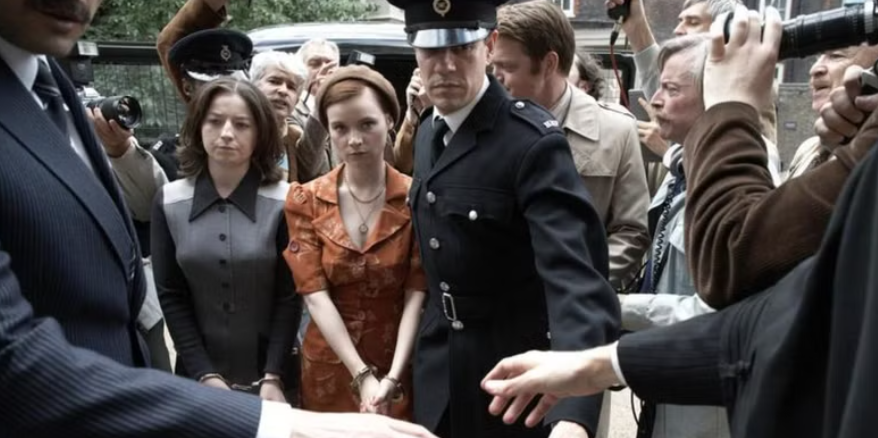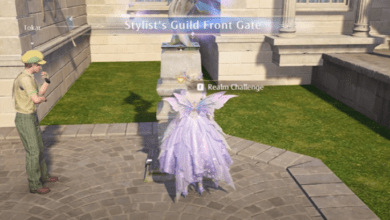Say Nothing Review: A Riveting Look Into the IRA, Betrayal and the Cost of Radical Ideals
Key Takeaways
- Say Nothing explores the harrowing intersection of political warfare, personal trauma, and the desperate pursuit of justice during Northern Ireland’s Troubles.
- FX’s adaptation of Patrick Radden Keefe’s novel delves into the lives of key figures like Dolours Price, presenting a captivating and thought-provoking narrative on the complexities of revolutionary movements.
- Through carefully crafted storytelling and a talented ensemble cast, the series sheds light on the emotional toll of violence, loyalty, and moral compromise.
The Story of Jean McConville and the IRA’s Dark Shadow
In 1972, Jean McConville, a single mother raising 10 children in Northern Ireland, vanished without a trace. She was abducted by members of the Irish Republican Army (IRA), suspected of being an informant. Her disappearance and the ensuing trauma for her family have left a lasting scar in the region, symbolizing the brutal and often incomprehensible cost of war. The mystery of her fate grew into one of the most infamous cases during Northern Ireland’s Troubles, and it wasn’t until decades later that her children began to uncover the truth.

Jean McConville’s life, and death, along with the complex motivations and violent actions of the IRA, are central themes of Say Nothing: A True Story of Murder and Memory in Northern Ireland, a book by Patrick Radden Keefe. Now adapted into a nine-episode series on FX, Say Nothing explores not only McConville’s story but also the IRA’s impact on its members and victims, all through a gripping narrative that’s as much about personal trauma as it is about political rebellion.
The Heart of Say Nothing: A Dual Lens on the Conflict
At its core, Say Nothing is framed through two contrasting characters: Jean McConville and Dolours Price, a prominent member of the IRA whose fervent loyalty to the cause ultimately leaves her grappling with moral and emotional consequences. Price’s story revealed through her memories of violence, incarceration, and regret provides a visceral entry into the world of the IRA, highlighting the internal and external battles of those who believed in violent resistance.
Price’s tragic journey begins with her and her sister Marian joining the IRA not to support from the sidelines, but to lead violent actions on the front lines. Under the command of prominent IRA figures like Gerry Adams, the sisters plant bombs, conduct attacks, and silence informers. As the series unfolds, Price’s struggle to reconcile her actions and beliefs with the profound damage they caused becomes increasingly apparent.

Through the intertwined narratives of McConville’s abduction and Price’s transformation, the series presents a haunting meditation on the costs of loyalty, the fragility of justice, and the ever-present specter of remorse.
FX’s Adaptation: A Powerful Ensemble That Breathes Life into History
Directed by Joshua Zetumer, FX’s adaptation stays true to Keefe’s work while bringing a visual and emotional depth that can only be achieved on screen. The cast, led by Maxine Peake as the older Dolours Price and Judith Roddy as Jean McConville, creates a powerful portrayal of these individuals’ struggles and resilience. Each episode draws viewers deeper into the pain, conviction, and moral dilemmas facing the IRA members, particularly Dolours, whose evolution from passionate revolutionary to a haunted individual grappling with regret gives the show a unique emotional intensity.
The series balances historical authenticity with powerful character portrayals, carefully exploring the IRA’s objectives and methods. Characters like Gerry Adams (played by Josh Finan) and Brendan Hughes (portrayed by Anthony Boyle) reveal the complexities of the revolutionary movement, allowing the audience to empathize with and question their motives. This commitment to multi-dimensional characters is perhaps one of the most compelling aspects of Say Nothing.
Revisiting The Troubles: A Haunting, Faithful Recreation
Say Nothing takes viewers back to the 1970s, during Northern Ireland’s infamous Troubles, with intense scenes like the 1973 Old Bailey bombing and Price’s hunger strike in prison. The meticulous recreation of historical events not only serves to inform but also engages the audience on an emotional level. The stark depiction of these moments from IRA attacks to the Price sisters’ arrests illustrates the cost of a war that impacted countless lives.
Through carefully paced episodes, the show places viewers within the raw, often brutal reality of life during The Troubles. The series pulls no punches in depicting the trauma of combat and the perils of a cause taken to the extremes of morality and law.
A Journey into Moral Complexity and Consequences
Say Nothing doesn’t glamorize violence. Instead, it highlights the profound consequences faced by those who engaged in extreme actions for the sake of an ideal. Dolours Price’s character arc reflects this theme profoundly. Through her recollections and regrets, the audience gains insight into the inner turmoil of those who believed in a cause but eventually found themselves questioning if the sacrifices were worth it.
This reflective approach gives the series depth and nuance, urging viewers to consider the fine line between justice and vengeance, loyalty and fanaticism. The series deftly explores how Price’s once-steadfast conviction turns to regret as she recognizes the trauma inflicted not only on others but also on herself.
The Show’s Limits and Triumphs: Translating a Masterpiece
While Say Nothing the book draws on years of meticulous research and first-hand interviews, the television adaptation faces the challenge of condensing this immense scope into nine episodes. Despite these limitations, the show captivates through its thoughtful approach to storytelling, allowing audiences to feel the emotional weight behind each scene.
Some may find the show’s pace occasionally distant, a necessary compromise in translating a densely packed narrative. However, the riveting performances, historically accurate scenes, and carefully crafted script create a mesmerizing portrayal that holds viewers’ attention from start to finish.
Conclusion: A Must-Watch for History Enthusiasts and True Crime Fans Alike
Say Nothing is a triumph in historical storytelling that sheds light on a tumultuous period in Irish history with unflinching honesty. The series is a profound examination of human resilience, the darkness of radical beliefs, and the heavy burden of actions taken in the name of freedom.
The lives and conflicts of Jean McConville, Dolours Price, and the broader IRA are more than historical subjects they are reflections of the broader human experience. As a piece of entertainment, Say Nothing is enthralling; as a lesson in history, it’s indispensable.
FAQs
What is Say Nothing about? Say Nothing is based on Patrick Radden Keefe’s non-fiction book of the same name. The series follows the real-life story of Jean McConville, who was abducted by the IRA in 1972, and Dolours Price, an IRA member. Through these characters, the series explores the complexities of loyalty, the cost of political violence, and the heavy emotional toll of radical beliefs.
Does the show glorify the IRA or violent conflict? No, Say Nothing offers a critical perspective on violence and political rebellion. While it does show the IRA’s actions and beliefs, it also delves into the moral consequences and regrets of those involved, presenting a balanced view that encourages reflection rather than glorification.
Is Say Nothing historically accurate? The series stays close to the events detailed in Keefe’s book, which is based on extensive research and interviews. FX’s adaptation captures key events, including the 1973 Old Bailey bombing and the Price sisters’ hunger strike, with a high degree of historical accuracy.
When and where can I watch Say Nothing? The show will be available for streaming on Hulu starting November 14.
What makes Say Nothing worth watching? Beyond its compelling storyline, Say Nothing brings a thoughtful look at personal and political conflicts. It’s an intense, well-acted series that not only explores a turbulent time in Northern Ireland’s history but also touches on universal themes of regret, loyalty, and the human cost of warfare.





